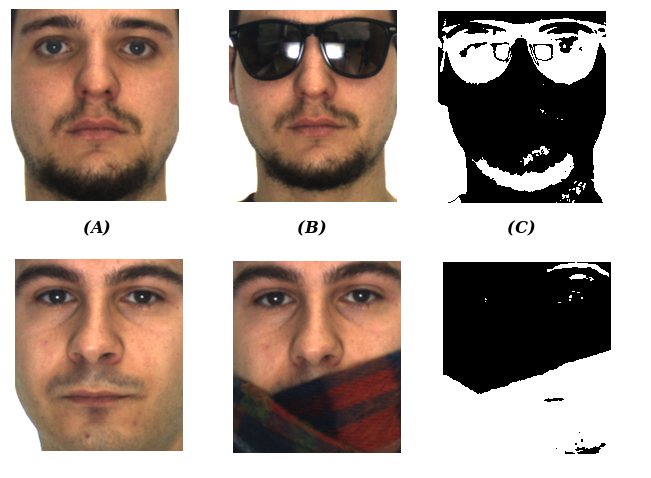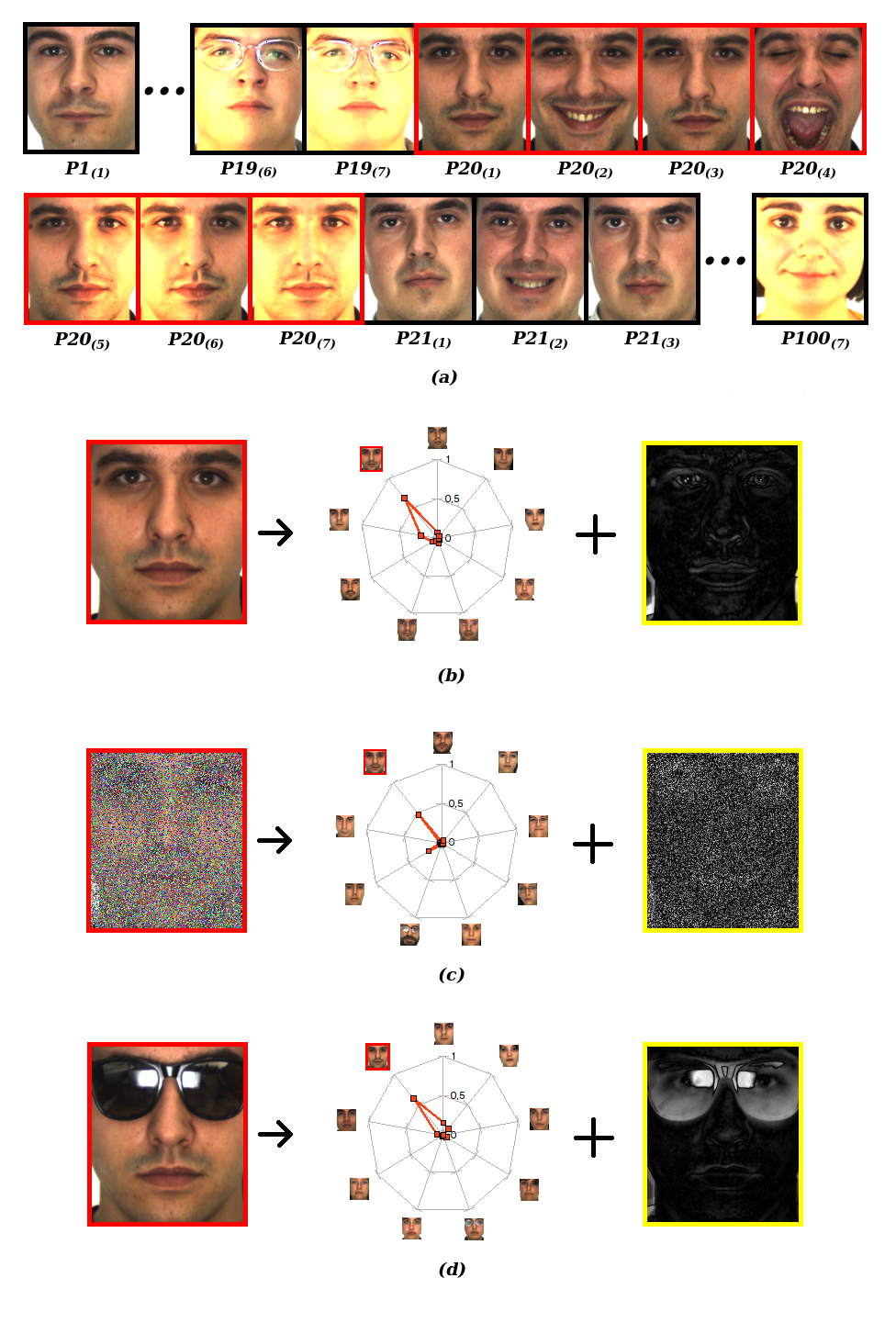|
|
Face Recognition System
Increasingly, software applications and consumer electronics devices are incorporating the face recognition technology, such as: automatic monitoring of groups of people, airport security, social networking sites, software embedded in cameras, image processing software and photo management, video analysis, human computer interface (HCI), security systems and comfort in vehicles and homes, among others.
One of the main obstacles to recognize people's identity is when a certain portion of the face is occluded (eg, wearing sunglasses, scarves, hats, etc.), making existing methods fail to recognize. This occurs not only because the occlusion removes important information of the face but also because it introduces error, impairing the recognition.

Occlusion detection to improve the recognition. (a) images of subjects without occlusion. (b) occluded images to identify. (c) Detection of non-occluded areas which will be later used in the recognition (black areas).
The method we use is based on recent discoveries and is able to recognize the person even when a a big portion of it is occluded. The algorithm has two stages, the first is to split the occluded portions from the non-occluded one so as to introduce the least amount of error in the recognition stage. Then, using only the non-occluded portion of it we can identify the identity of the subject. To do this, we classify the images using a novel method for the reconstruction of signals, called Sparse Decomposition. The method attempts to identify a test face using a database of faces. It uses the faces of the database to reconstruct the test face.

Robust Recognition using Sparse Decomposition: (a) 100 faces from the AR face database: 50 men and 50 women in different poses and illumination. (b) Recognition of a non-occluded face (P20) and its associated error. The recognized person is shown in the spider graph marked with a red frame. (c) Recognition of the same face with 70% of the face occluded with impulse noise and its associated error. (d) Recognition in the prescence of sun glasses and its resulting error. In this last case, it can be clearly seen the error consisting in the eyes missing from the test image.
|